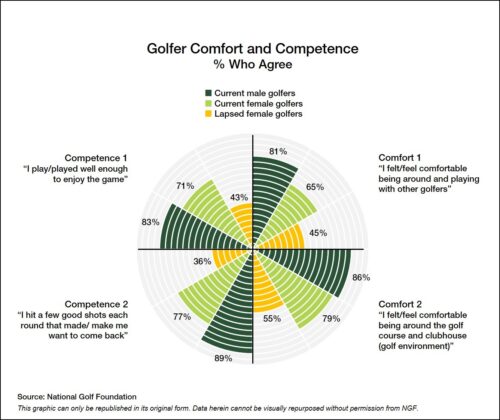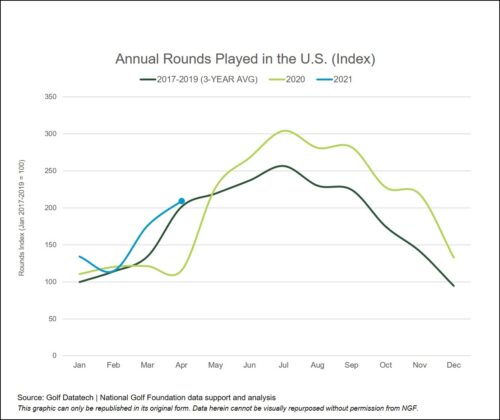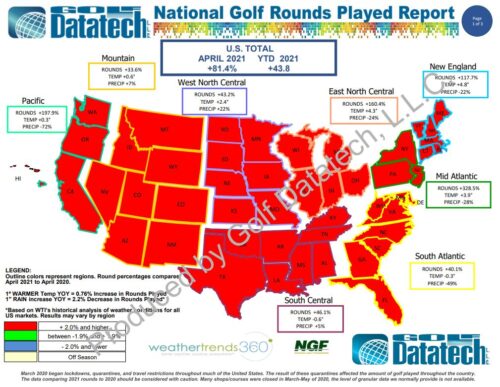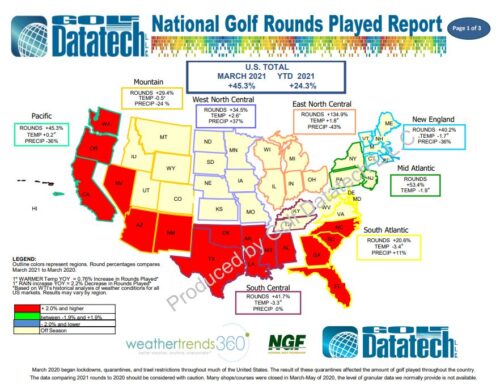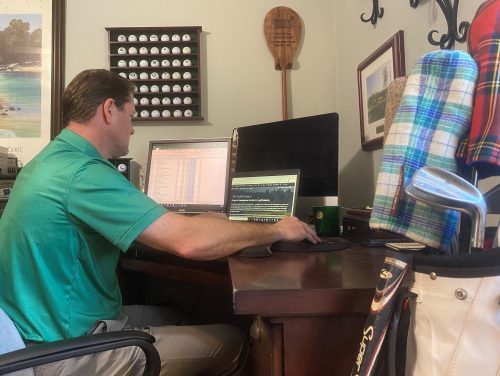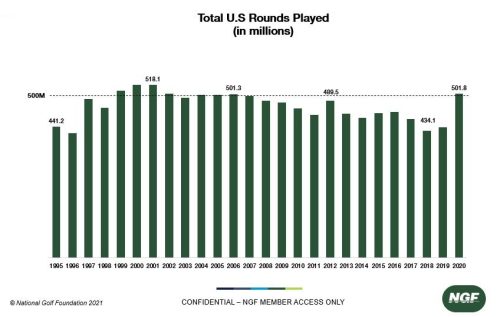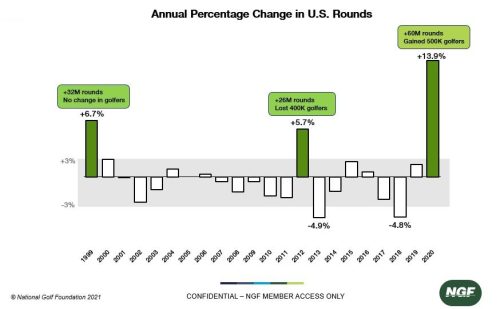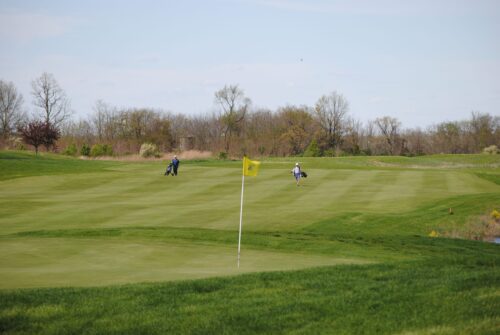3-Minute Business Insights
Just seven years ago, the proportion of all golf participants (on/off-course combined) who were women was 27%. Since then, the volume of female participants has grown by 43%, and there's even greater potential.
While April’s rounds this year are obviously up dramatically due to last year's course shutdowns, here's how they compare to the pre-pandemic numbers.
The question for April 2021 wasn’t whether rounds played would be up, it was how much they'd be up over a year ago.
Golf’s overall participation base in the U.S. – combining on- and off-course players – rose 8% in 2020 to 36.9 million. This leaves us with three closely-sized and mutually-exclusive groups of Americans.
And it probably won’t be long before traditional, “green grass” participants are out-numbered. Perhaps as soon as this year.
The coronavirus first started impacting U.S. golf operations in March of 2020. A year later, here's what national rounds played looked like for March of 2021.
Limitations on golf trips in 2020 have created a bottled-up demand to return to golf travel. Here's what golfers are saying and operators are seeing.
Working remotely has provided greater schedule flexibility for many people over the past year. It's also had a significant impact on golf.
Harold Varner III knows first-hand the importance of affordable access to golf. Now, Varner is giving back through an expanded partnership with Youth on Course.
Working remotely has changed the contours of the work day for many over the past year. NGF recently conducted golfer research to gain deeper insight about the relationship between golf and the work-from-home dynamic.
12 Months, 1 Pandemic and 1,234 Rounds
As golf provided an escape from daily coronavirus anxiety for millions of Americans in 2020, nobody played more than 61-year-old Texas resident Barry Gibbons.

